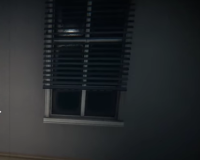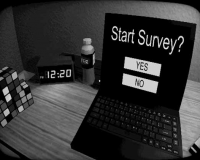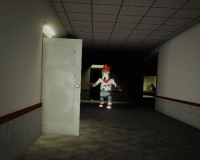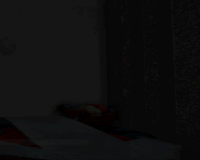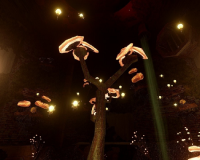
Advertisement
Let Me Inside
Let Me Inside begins with a detective arriving at an empty house after being assigned to a case that makes little sense. The official report describes an impossible scene—a locked-room murder with no trace of entry or exit. Hoping to find clarity, the detective rents a nearby home to observe the area and gather details. The first day passes quietly, filled with paperwork and restless thoughts. Then night falls, and small sounds begin to echo through the walls: shifting wood, muffled steps, the faint click of a door that was never opened. The investigation turns inward before it even begins.
Waiting for the Knock
The house functions as both setting and mechanism. Every part of it feels designed to test how long a person can endure isolation. There are no overt threats, only patterns that seem to build toward something inevitable. The detective moves from room to room, checking windows, turning lights on and off, trying to understand if the noises are real. The experience grows repetitive, but not without purpose. The monotony becomes a tool, a way of teaching the player to sense change before seeing it. When the knock finally comes, it feels expected, almost rehearsed.
The Routine of Defense
Each night repeats the same structure with small differences that slowly alter the player’s sense of control.
The main loop of Let Me Inside can be described through these steps:
- Inspect the rooms before sunset.
- Secure every door and window.
- Wait in silence until something moves.
- React without panic or haste.
- Survive until the next morning.
This routine seems simple but demands focus. Every sound carries meaning, and every pause feels deliberate. The detective learns that safety is temporary, dependent on observation and restraint.
When Inside Becomes Outside
Over time, the sense of space begins to shift. The detective notices changes in the layout that should be impossible: a hallway longer than before, a window where there was none. What was once outside now seems to exist within the walls. The visitor who knocks no longer waits for permission. The player experiences intrusion as a gradual process, one that begins long before any door opens. The tension lies not in the arrival but in the realization that it may have already entered.
The story closes without explanation. Whether the detective survives or not is unclear. The act of letting something inside becomes a metaphor for losing boundaries—between work and obsession, between self and other. The final image suggests that once the line is crossed, nothing separates the living from the listening. Let Me Inside ends with the same sound it began with: a single, patient knock that no longer waits for an answer.





